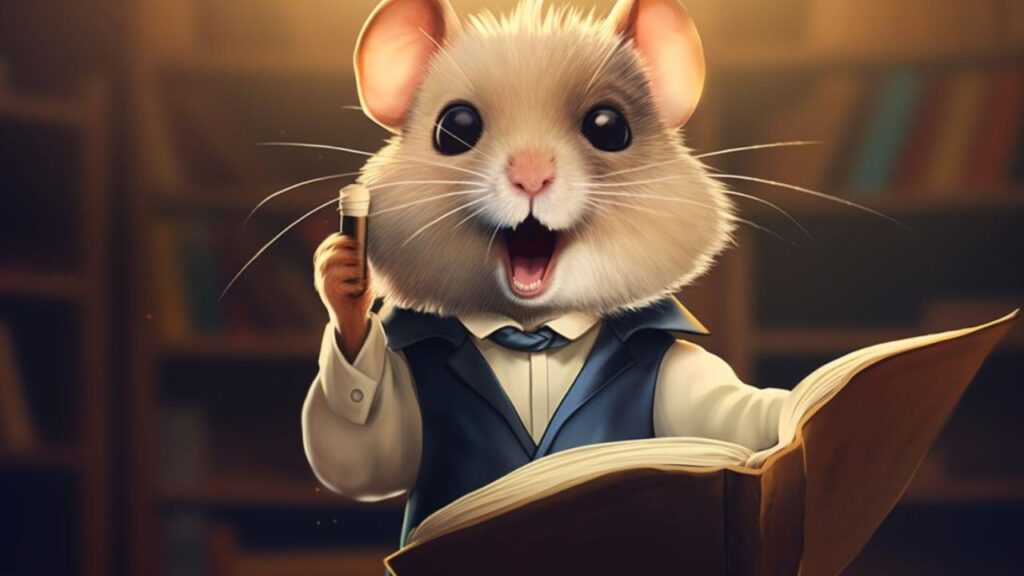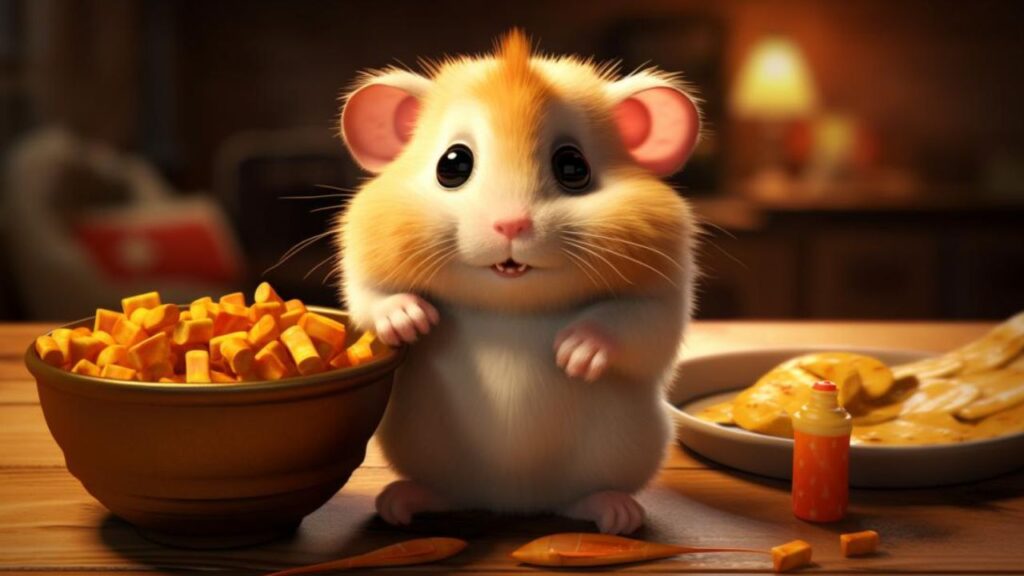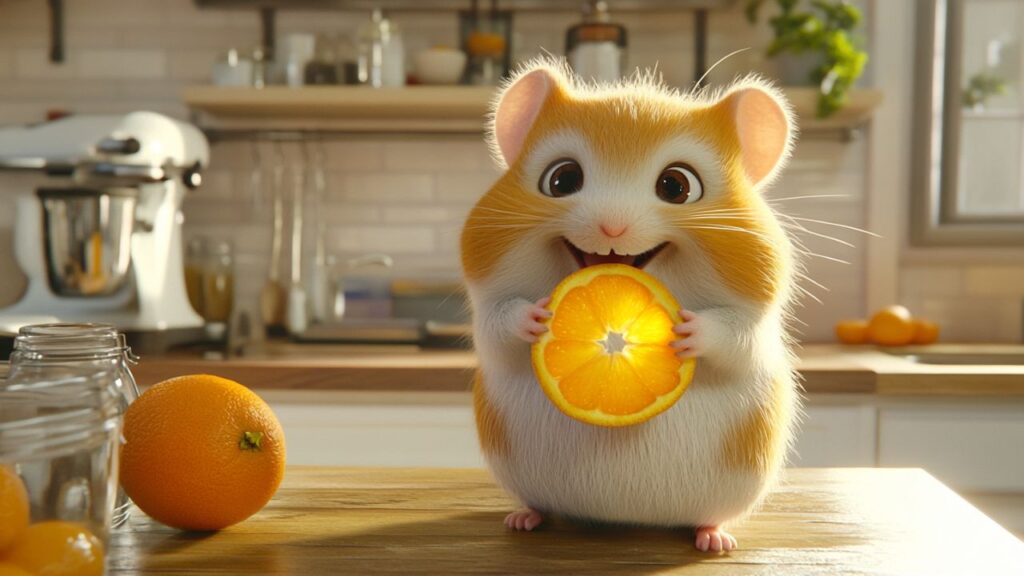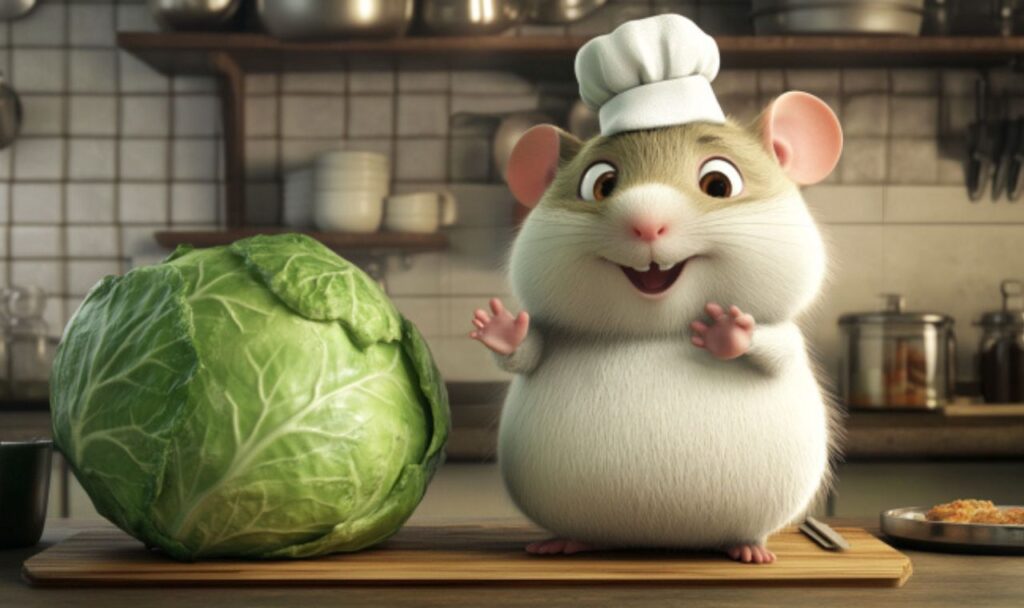TL;DR Summary
Yes, hamsters can eat crickets as they are a nutritious source of protein, essential for their diet. However, crickets should only be a supplemental treat provided in moderation alongside a balanced diet of pellets, vegetables, and occasional fruits. Start with small quantities of properly sourced crickets to ensure they are safe for your hamster, and always observe your pet’s reaction to new foods. Remember, a varied diet is key to a hamster’s health, and crickets are just one part of the wholesome menu you can offer to your furry companion. A happy hamster is a wheel-y happy you!
In the cozy corners of our homes, hamsters scurry on their wheels, embodying the spirit of playful vitality. These small rodents, known for their omnivorous appetites, require a concoction of nutrients to maintain their energetic endeavors. Protein, an essential building block of life, stands out as a critical component of their diet, supporting everything from fur health to muscle maintenance.
Hamsters: The Omnivorous Nibblers
Contrary to the common image of hamsters stuffing their cheeks with seeds and grains, these creatures are not strict herbivores. In the wild, their diet is surprisingly varied, encompassing an array of insects and other protein sources to balance their nutritional intake. This omnivorous nature begs the question: how can we replicate such a diet in captivity, and more importantly, what role does protein play in the grand scheme of their nutritional needs?
Can Crickets Sing in a Hamster’s Menu?
As pet owners explore the aisle of animal feeds, pondering the best choices for their whiskered companions, the option of crickets often jumps out. These chirpy insects are a natural source of protein in the wild for many animals, but does this translate to a domesticated hamster’s diet? Can these tiny athletes of the insect world provide the protein punch our hamsters need, and if so, are they a safe choice? Join us as we hop into the details of hamsters and their potential cricket companions. We’ll investigate if this protein source is a match for our furry friends or if it’s better left outside the cage.
Understanding Hamster Dietary Needs

Hamsters, with their boundless energy and adorable antics, require a well-rounded diet to thrive. Protein, a crucial macronutrient in the hamster diet, serves as the cornerstone for various bodily functions. But the source of this protein—whether animal or plant-based—can significantly impact their health and wellbeing.
The Role of Protein in a Hamster’s Diet
Proteins are composed of amino acids, the building blocks that support growth, repair tissues, and maintain a healthy immune system. For hamsters, these nutrients are vital for their fast-paced growth, especially in the early stages of life, and continue to be essential throughout their adulthood.
- Fur Health: Protein is necessary for maintaining a lush, healthy coat.
- Muscle Maintenance: Active hamsters require protein to keep their muscles strong, aiding in their endless wheel-running and tunneling activities.
- Reproductive Health: For breeding hamsters, adequate protein is necessary for the health of both the mother and her pups.
Animal vs. Plant-Based Protein Sources for Hamsters
Animal Proteins
Animal proteins, such as those found in insects like crickets, provide complete proteins with all essential amino acids that hamsters need.
- Benefits: High biological value, meaning the protein is easily utilized by the hamster’s body.
- Considerations: Should be given in moderation, as excessive animal protein can lead to obesity and other health issues.
Plant-Based Proteins
Plant-based proteins, such as those in legumes and seeds, are part of a hamster’s natural diet but are typically incomplete proteins, lacking one or more essential amino acids.
- Benefits: Often accompanied by fiber, which aids in digestion.
- Considerations: May require combination feeding to ensure all amino acids are consumed.
Balancing Protein Sources
A balance of both animal and plant-based proteins is ideal for a hamster’s diet. This ensures they receive all necessary amino acids while benefiting from the additional nutrients that plant-based proteins offer. The key is to provide a varied diet that replicates their natural foraging behavior as closely as possible.
Crickets as a Protein Source

Crickets are not just the background music to a summer night, but they also have the potential to be a symphony of nutrients for your hamster. Let’s examine the nutritional composition of crickets and how they might harmonize with your hamster’s dietary needs.
Nutritional Value of Crickets
Crickets are more than just a wriggling snack; they are a powerhouse of nutrition. High in protein, crickets also boast an impressive profile of vitamins and minerals:
- Protein Content: Crickets are composed of up to 70% protein, making them an excellent source of essential amino acids.
- Fats: They contain a good balance of omega-3 and omega-6 fatty acids, beneficial for heart health.
- Vitamins and Minerals: Crickets are rich in B vitamins, iron, zinc, and magnesium, which are crucial for various bodily functions, from energy metabolism to immune system support.
The Benefits of Feeding Crickets to Hamsters
Incorporating crickets into your hamster’s diet can offer several benefits:
- Complete Protein: As a complete protein source, crickets can provide all the essential amino acids your hamster needs.
- Nutrient Dense: With their rich vitamin and mineral content, crickets can contribute to a more robust and balanced diet for your hamster.
- Variety and Enrichment: Feeding live crickets can also provide behavioral enrichment, giving your hamster a chance to exhibit natural predatory behaviors.
Potential Risks of Feeding Crickets to Hamsters
However, there are a few risks to consider before making crickets a regular feature in the feeding bowl:
- Digestive Distress: Some hamsters may have difficulty digesting the exoskeleton of crickets, which could lead to gastrointestinal issues.
- Overfeeding: High protein levels are beneficial but in excess, they can contribute to obesity and other health problems in hamsters.
- Parasites and Pesticides: Wild-caught crickets may carry parasites or pesticides that can be harmful to your hamster. It’s essential to source crickets from reputable suppliers to avoid these risks.
Crickets could indeed play a chirpy part in fulfilling your hamster’s protein concertos, but it’s crucial to ensure that they strike the right note in terms of quantity and quality. In our next segment, we’ll provide some ‘Whisker Tips’ for safely introducing crickets to your hamster’s dietary orchestra. Tune in to keep your hamster’s health on a high note, and remember, a happy hamster is a wheel-y happy you!
Whisker Tips: Introducing Crickets to Your Hamster

Introducing a new protein source like crickets into your hamster’s diet can be likened to adding a new instrument to an orchestra—it should be done with care and attention to the existing harmony. Here’s a step-by-step guide to ensure that this new dietary addition hits the right notes for your furry friend’s health.
Step-by-Step Guide to Introducing Crickets
Step 1: Choose Your Crickets Wisely
- Source: Always opt for crickets from a reliable pet food supplier to minimize the risk of parasites and pesticides.
- Size: Select small crickets that your hamster can easily chew and digest, which will help prevent choking hazards.
Step 2: Start with a Solo
- Initial Offering: Begin by offering one cricket to your hamster and observe. This solo introduction lets you monitor how your hamster reacts, both in terms of interest and digestion.
Step 3: Watch for the Encore
- Observation: After the initial introduction, watch your hamster for the next 24 to 48 hours. Look for any signs of digestive upset or changes in behavior that might indicate intolerance.
Step 4: Gradual Crescendo
- Gradual Increase: If your hamster enjoyed the cricket and had no adverse reactions, you can slowly increase the number, but always in moderation.
Quantity and Frequency of Cricket Feeding
Quantity: Less Is More
- Moderation: Offer only a small number of crickets. For a Syrian hamster, one or two small crickets per week is sufficient. For dwarf varieties, one small cricket per week is adequate.
Frequency: Keep It Special
- Occasional Treat: Crickets should be an occasional treat, not a staple of the diet. Regular feeding of crickets is not necessary and could lead to an imbalance in nutrients.
Balance Is Key
- Dietary Balance: Ensure that the introduction of crickets doesn’t overshadow the essential components of your hamster’s diet, like specially formulated pellets and a variety of vegetables.
By following these ‘Whisker Tips’, you can ensure that your hamster enjoys the benefits of crickets as a protein source without any undue risks. Remember that the introduction of any new food should be a gradual symphony, not a sudden crescendo. As you orchestrate your hamster’s diet, keep in mind that a little protein goes a long way, and a balanced diet is the magnum opus of hamster health. Remember, a happy hamster is a wheel-y happy you!
Alternatives to Crickets

While crickets can add a crunchy variety to a hamster’s diet, they’re not the only protein players in the pet food ensemble. There are several other nutritious protein sources that can cater to your hamster’s needs. Let’s explore some of these alternatives and see how they measure up to crickets in terms of nutritional content.
Safe and Nutritious Protein Sources for Hamsters
Cooked Chicken
- Nutritional Content: Lean, cooked chicken is an excellent source of protein and provides essential amino acids.
- Comparison to Crickets: Chicken offers a higher protein content by weight and is easier for hamsters to digest due to the absence of an exoskeleton.
Mealworms
- Nutritional Content: Mealworms are another insect option that’s rich in protein and also provides a good amount of fat for energy.
- Comparison to Crickets: Similar in nutritional value, mealworms can be a softer alternative for hamsters who might struggle with the harder exoskeleton of crickets.
Hard-Boiled Eggs
- Nutritional Content: Eggs are a complete protein source and contain a variety of essential vitamins and minerals.
- Comparison to Crickets: Eggs are a versatile protein source that can be cut into small, manageable pieces for your hamster, without the risk of parasites.
Cheese
- Nutritional Content: Small amounts of cheese can provide protein as well as calcium.
- Comparison to Crickets: While cheese is a good protein source, it should be given in moderation due to its fat content and the potential for lactose intolerance in some hamsters.
Tofu
- Nutritional Content: Tofu is a plant-based protein that also offers a substantial amount of iron and calcium.
- Comparison to Crickets: Tofu is lower in fat compared to crickets and can be a good alternative for hamsters needing a lower-fat diet.
Choosing the Right Protein for Your Hamster
When considering these alternatives, it’s important to evaluate not just the protein content but the overall nutritional profile and how it fits into your hamster’s diet. Factors such as digestibility, potential allergies, and individual preference should be considered. Each of these protein sources offers different benefits and can be used to add variety to a hamster’s diet while ensuring they receive all the nutrients they need.
Summing Up Crickets in a Hamster’s Diet

As we round off our exploration into the world of hamster nutrition, specifically the role of crickets as a protein source, it’s time to distill our findings into a few key sips of wisdom.
Crickets, those tiny conductors of the night’s symphony, can indeed have a place in the dietary repertoire of a hamster. They are a rich source of protein and offer a variety of essential vitamins and minerals that can contribute to a hamster’s well-being. When introduced properly and fed in moderation, crickets can provide both nutritional benefits and behavioral enrichment for your furry friend.
Key Findings on Crickets as a Hamster Treat
- Nutritional Value: Crickets are a complete protein and rich in nutrients, making them a wholesome treat for hamsters.
- Feeding Guidelines: Crickets should be introduced slowly into a hamster’s diet, ensuring they are sourced safely and served in appropriate amounts.
- Balanced Diet: Despite their benefits, crickets should only be a part of a varied and balanced diet, which is crucial for maintaining a hamster’s health.
The Symphony of a Balanced Hamster Diet
A hamster’s health is maintained not by a single food but by the harmonious blend of various nutrients. A balanced diet for a hamster should consist primarily of high-quality hamster pellets, a selection of fresh fruits and vegetables, and the occasional treat of animal protein. The inclusion of crickets should be viewed as an occasional delicacy rather than a main course, ensuring that your hamster enjoys a wide range of nutrients from multiple sources.
As the curtain falls on our discussion about hamsters and crickets, remember that the best approach to your pet’s nutrition is one that considers variety, moderation, and balance. By providing a diverse mix of foods, you ensure that your hamster gets all the nutrients they need to lead a happy, healthy, and active life. And with that, we conclude our symphony of hamster dietary needs. Remember, a happy hamster is a wheel-y happy you!




